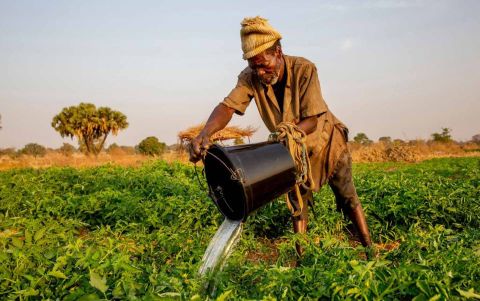Feeding Africa: how small-scale irrigation can help farmers to change the game
- From
-
Published on
02.05.23

Unlike large-acreage government irrigation schemes, small-scale irrigation is typically farmer led. Farmers decide what technologies to use to extract water, be it manual lifting or solar water pumps. They also choose the mode of irrigation, whether by buckets or drip kits. Farmers purchase, run, and maintain the operation themselves on their own farms or as part of small groups of farmers.
Small-scale irrigation can help smallholder farmers to increase agricultural productivity and incomes. It can be scaled quickly and without large public investments. For these reasons, it can contribute more rapidly to the achievement of national agricultural and development goals, compared to large irrigation schemes.
Currently, less than 5% of cultivated land in sub-Saharan Africa is irrigated. The reliance on rainfed agriculture prevents farmers from cultivating high-value nutritious crops that often need large amounts of water that are applied more frequently. Some vegetable crops consist mostly of water, for example, tomatoes or cucumbers, and their yield and quality, deteriorate rapidly under water stress.
